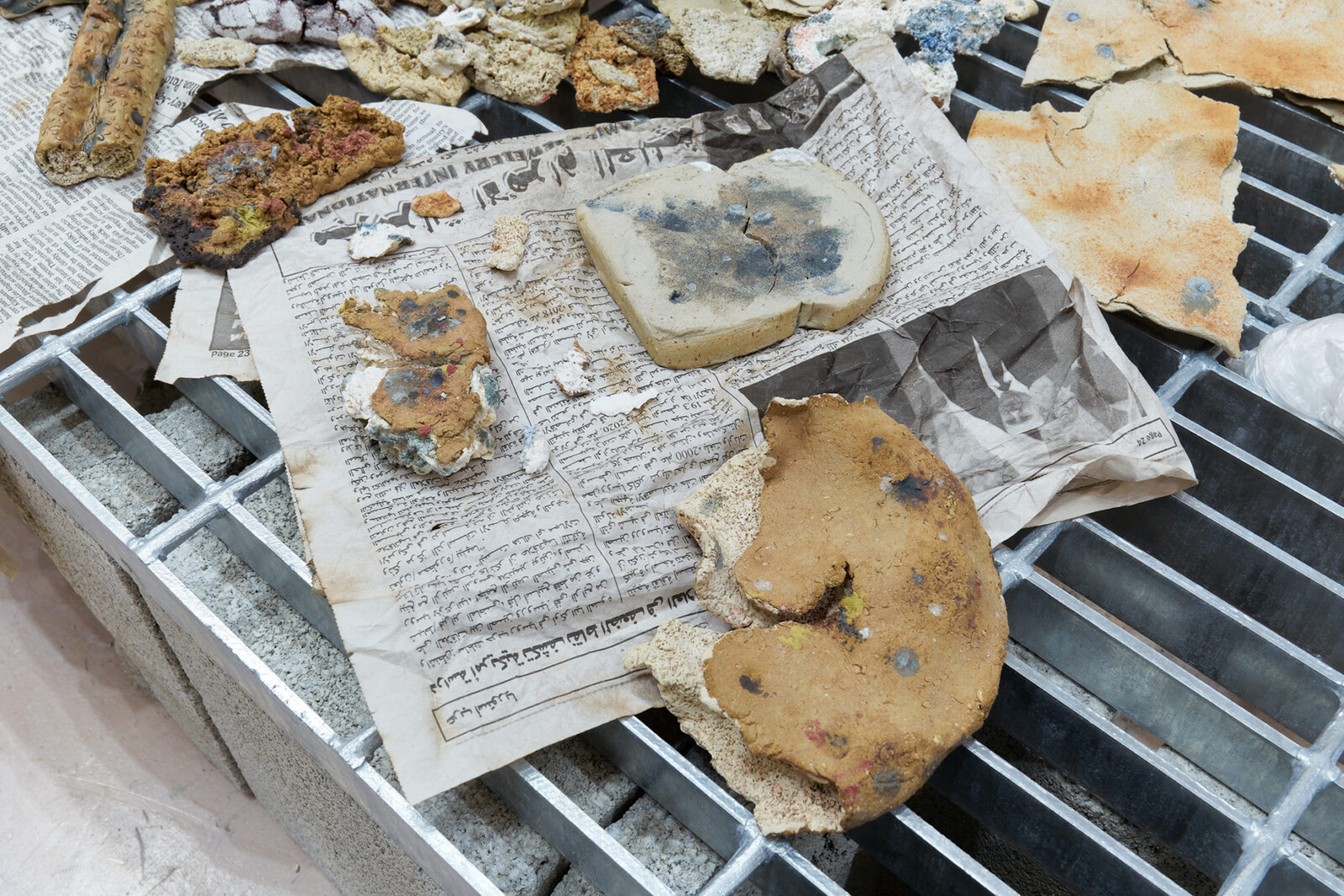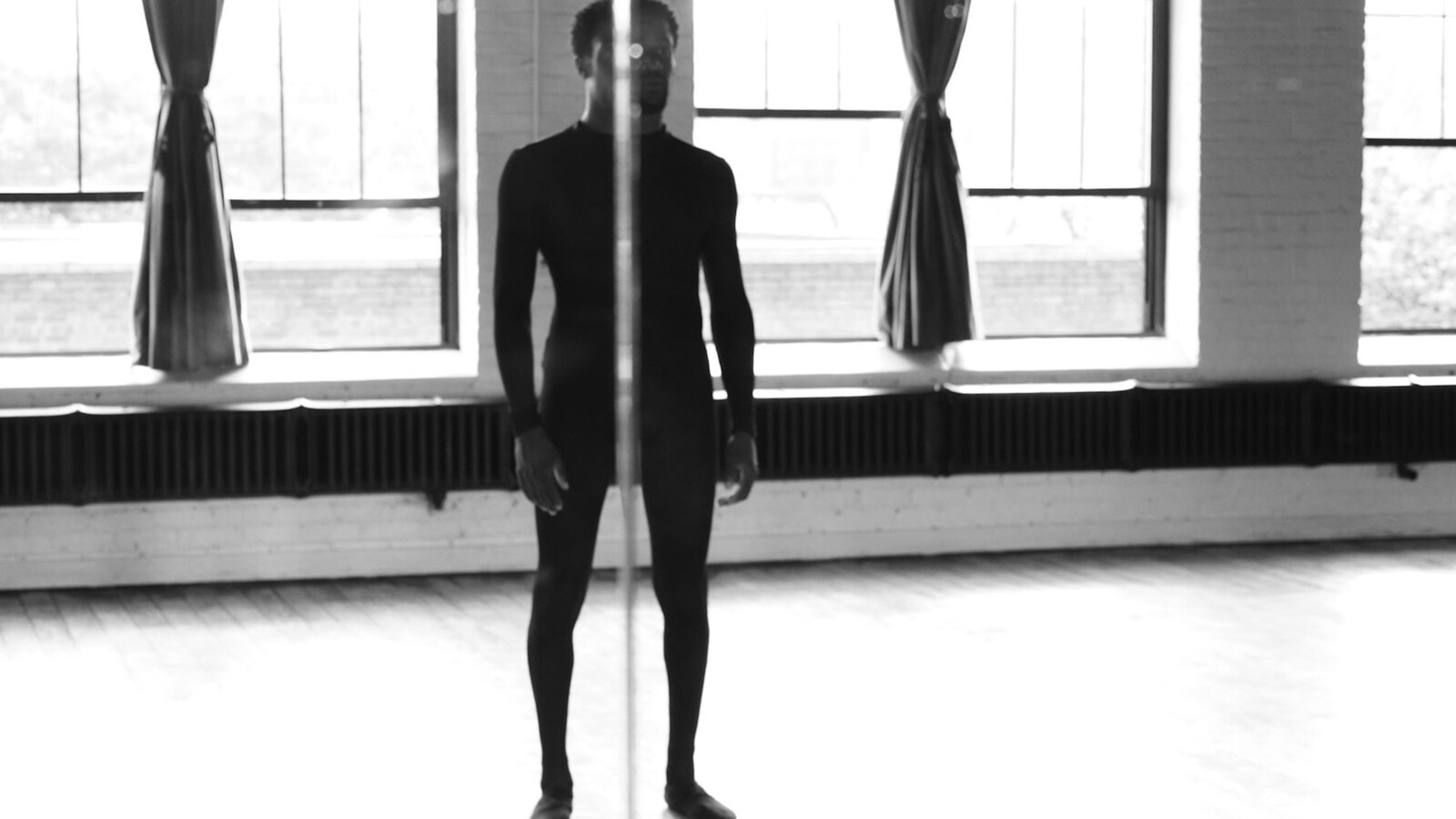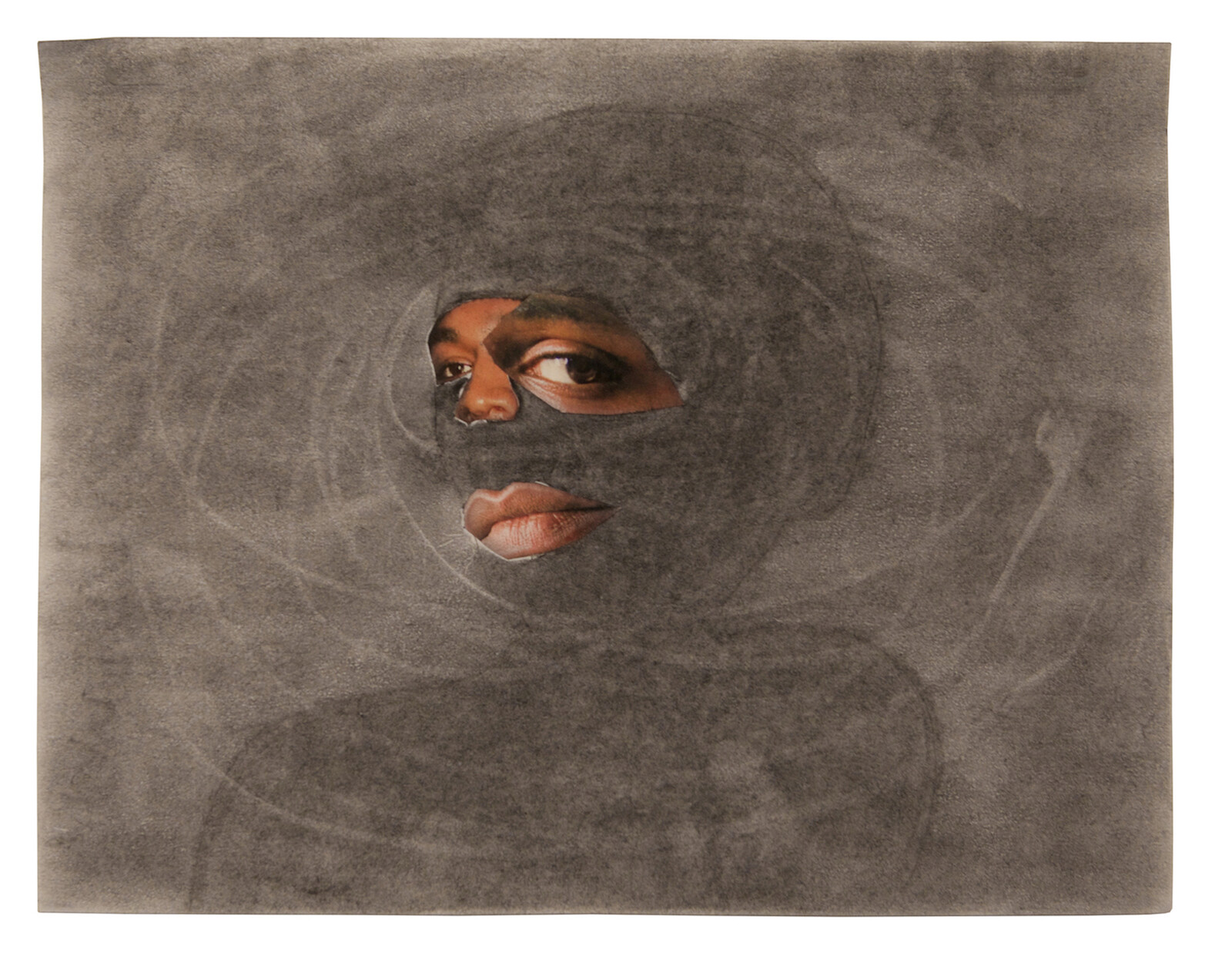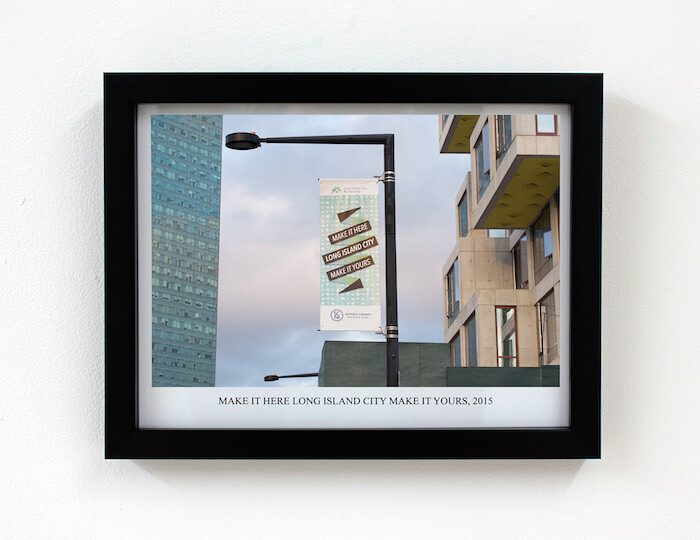Categories
Subjects
Authors
Artists
Venues
Locations
Calendar
Filter
Done
November 9, 2022 – Review
Jumana Manna’s “Break, Take, Erase, Tally”
Dina Ramadan

Jumana Manna’s first US museum exhibition traces the violence inflicted through infrastructures designed to control, transform, protect, or even destroy the natural environment, while recognizing the ways in which the land, in its mutations and transformations, resists in order to survive. Knowledge produced from and about the land emerges as a site of struggle, both an apparatus of hegemony and oppression and a potential tool for defiance and liberation.
The exhibition includes recent and newly commissioned sculptural works; pieces from the multidisciplinary Palestinian artist’s ongoing “Cache Series” populate the main gallery space. These large, smooth, earth-toned ceramic sculptures seem capable of shape-shifting despite their sturdiness. Inspired by the khabyas—the storage vessels attached to homes throughout the Levant that have been rendered superfluous with the proliferation of modern means of refrigeration—they capture these structures in various states of disintegration and ruination. Some share recognizable features of the original khabya while others have morphed into unfamiliar forms, alien-like creatures whose disfigurations speak to their incongruity in the contemporary landscape, glossy monuments to their own demise in the face of industrialized means of producing and conserving food.
Throughout the exhibition, Manna borrows from the visual and organizational language of archival institutions; the steel …
October 17, 2021 – Review
“Greater New York”
R.H. Lossin

A large installation of T-shirts stretched across metal wall studs anchors MoMA PS1’s 2021 iteration of “Greater New York.” The T-shirts—by the collective Shanzhai Lyric—are the bearers of mistranslations (“Revoltig/No!/Save the Queen”), misspellings (“La Vieen Rose”), juxtapositions that make little to no sense (“LV/Louis Vuitton/Challenger Races for the Americas Cop/For the Americas Cop”), or free-floating phrases that violate the semiotics of communicative clothing (“I’ll be back!/I’ll be back!”). Shanzhai is the transliteration of a Chinese word for both “mountain hamlet” and “counterfeit.” The shanzai T-shirts, collected since 2015 from Hong Kong to New York City, are part of an ongoing project—or poem—that urges us to think about translation, trade networks, the exchange value that is increased by the designation “real,” and, as the artists note in the wall-text, “how deeply we can be moved by apparent non-sense, how it actually seems to describe with poetic precision, the experience of living in an utterly nonsensical world.”
Incomplete Poem (2015–ongoing) might serve as a useful cipher for a large and, one could argue, unavoidably chaotic exhibition. “Greater New York” is staged every five years. It is what it sounds like: an exhibition meant to give viewers a sense of what artists are …
October 8, 2020 – Review
“Marking Time: Art in the Age of Mass Incarceration”
Adam Kleinman

The feeling that physical detention is only one aspect of a grander system of constraint haunts “Marking Time: Art in the Age of Mass Incarceration.” Curated by Nicole R. Fleetwood, Amy Rosenblum-Martín, Jocelyn Miller, and Josephine Graf, and based on Fleetwood’s book of the same name published earlier this year, the adroit exhibition at MoMA PS1 features work by past and present detainees as well as their extended family, friends, and advocates, alongside pieces by other nonincarcerated artists. In doing so, the show maps what Fleetwood calls “carceral aesthetics,” referring to the wide-reaching ways in which the US prison-industrial complex affects cultural production, and how such artifacts draw an image of our society at large.
On a formal level, several works note how artists overcome the material limitations inherent to forced captivity. Jesse Krimes’s Apokaluptein 16389067 (2010–13) is a vast fever dream. Hung as a floor-to-ceiling panorama on a curved wall, it consists of heaven, earth, and hell drawn in pencil over newspaper images transferred using hair gel onto 39 bed sheets—each of which were individually smuggled out of jail via the postal system. A low plinth in another chamber hosts Dean Gillispie’s nostalgic maquettes depicting 1950s Americana …
February 7, 2020 – Review
“Theater of Operations: The Gulf Wars 1991–2011”
Dina Ramadan

Even before it opened, “Theater of Operations: The Gulf Wars 1991–2011” had attracted critical attention. A string of scandals highlighted once again just how embedded museums like MoMA, and its affiliate PS1, are in the military and prison industrial complexes responsible for so much of the devastation on display in this exhibition. Phil Collins’s withdrawal of his work from the show late last year, in protest of some MoMA board members’ investments in private prisons and ICE detention centers, was followed by a request from Iraqi-American artist Michael Rakowitz that the curators “press the pause button” on his video in order to “discuss some recent events.” After PS1 ignored Rakowitz’s request, the artist paused the video himself, in January this year, and posted a statement explaining his position on the gallery wall beside it. The museum quickly removed the statement, despite the artist’s insistence that it “constitutes an essential part of [the] ongoing artwork.” Three dozen participants in the show have since signed a letter urging the museum to sever ties with controversial trustees. Meanwhile, at least four Arab artists, including Netherlands-based Afifa Aleiby, were denied visas to attend the opening. Others knew better than to apply.
The absence of …
October 13, 2015 – Review
"Greater New York"
Andrew Stefan Weiner

One of the biggest stories of the year in U.S. literary fiction was the publication of Garth Risk Hallberg’s debut novel City on Fire, for which the young author received a reported two-million-dollar advance––a startling number, even by the hyperinflationary standards of the contemporary art market. Such a bet seemed odd at first, given the novel’s length (nearly a thousand pages), complex plot structure, and setting (New York City in the bombed-out 1970s). However, on closer inspection the deal looked canny. With the commercial appeal of this period already proven by figures like Patti Smith and Rachel Kushner, what better time to roll out a novel full of potential screenplay material? (In the event, the film rights were optioned for six figures; the novel was also sold in 17 other countries.)
As this episode suggests, fistfuls of money are being made from the fantasy of being poor and beautiful and artisanal in New York. This is true not just in the U.S. but globally, where “Brooklyn” is the most recognizable brand identity for bourgeois-bohemian-hipster culture. One uncomfortable irony is that many of those who built Brooklyn™ can no longer afford to live there; another is that figures like Hallberg exhibit an …
June 10, 2010 – Review
"Greater New York 2010"
Colby Chamberlain

Several installations from P.S.1’s inaugural exhibition “Rooms” (1976) have left a lasting mark on the institution—literally so, as they’re embedded into the building. In the attic, Richard Serra’s steel-beam Untitled is sunk into the concrete; Alan Saret’s The Hole at P.S.1, Fifth Solar Chthonic Wall Temple pierces through a wall. These enduring physical remainders make the history of P.S.1 inseparable from that of site-specificity. Through considerable renovation, the building has retained the character of its Romanesque Revival architecture and traces of its original use as a school. Its spaces are so emphatically idiosyncratic that, even in the case of artworks long absent, it’s difficult to view a new installation without also perceiving the after-image of what stood there previously.* Though it’s been covered over for years, you can still see the cut marks from Gordon Matta-Clark’s Doors, Floors, Doors in the floorboards.
At “Greater New York 2010,” the museum’s first major exhibition since the departure of its founding director Alanna Heiss and its re-christening as MoMA P.S.1, the emblematic piece might be Franklin Evans’s timecompressionmachine, (2010) which occupies the same first-floor corner gallery where Matta-Clark once sawed through the ceiling and floorboards. Evans has smothered the space with colored tape, mylar, …
